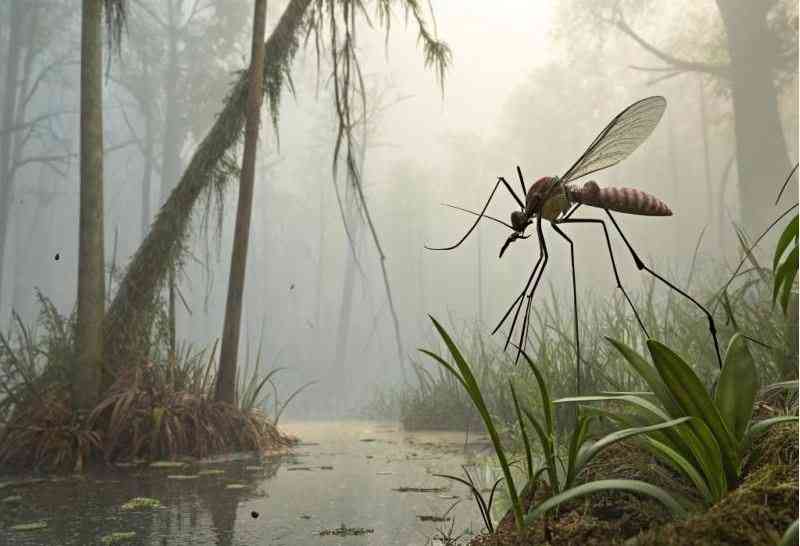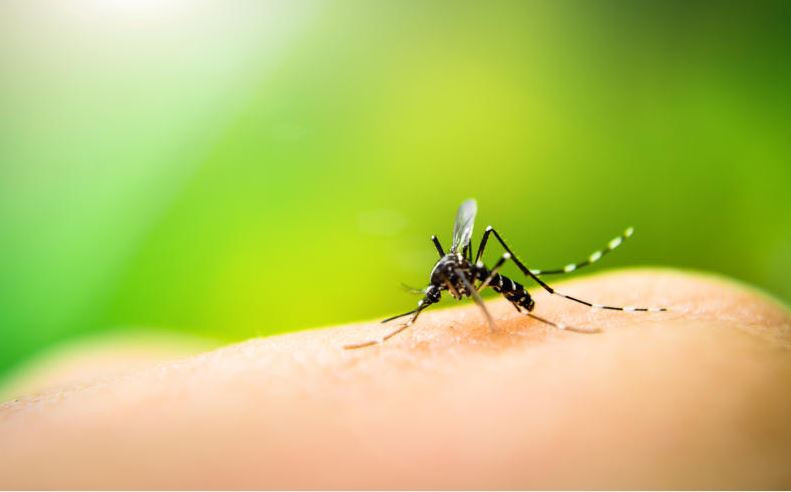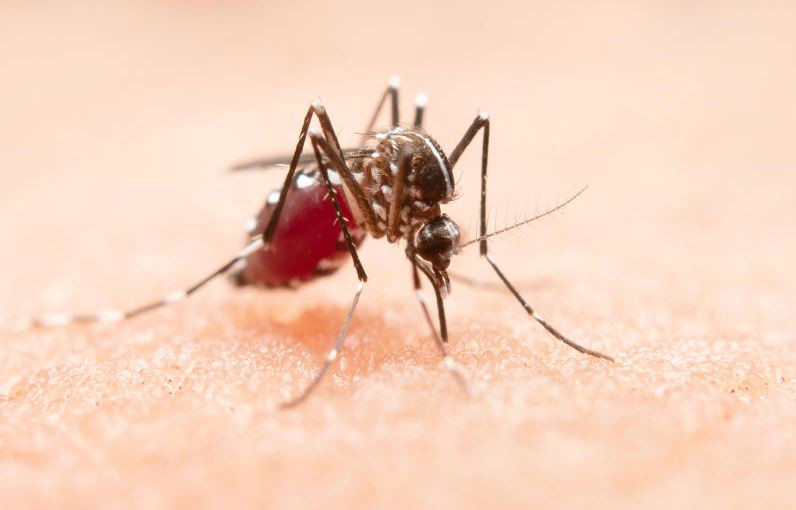By Robert Nyasato
The fight against malaria in Kisii highlands, a region where the disease is endemic, is bearing fruits.
After it became apparent that most patients sought medication when it was too late, the ministries of Public Health and Medical Services and NGOs focused on prevention.
This strategy has greatly reduced cases and deaths from malaria in a region that is prone to the disease and recorded many deaths during outbreaks, especially after rainy seasons. At the peak of the outbreaks, in 1998, the disease claimed more than 800 lives, mostly children and pregnant mothers.
"We have tremendously reduced morbidity and mortality," says local District Public Health Officer Francis Makau.
Mr Makau says the campaign invested heavily in prevention through intensified surveillance in collaboration with International Centre of Insect Physiology and Ecology (Icipe) and Merlin, a US NGO.
Breeding sites
Makau says the partners mapped out mosquito breeding sites for spraying with insecticides
Kiogoro, Kiamokama and Marani divisions were found to have the highest number of breeding grounds.
Households within a radius of one kilometre of the breeding sites were mapped and sprayed in a process known as indoor residual spraying (IRS).
The spraying keeps away malaria causing mosquitoes for at least six months.
The exercise was supported by funds from the World Health Organization (WHO).
When it started in 2003 15, 398 houses were sprayed far below the targeted 36, 692. The following year the number dropped to 9,224 houses of 38,040 selected. In 2006, there was a huge improvement with 32,300 of 52,810 houses covered. The following year 85,783 households were spray thanks to increased funding from the Global Fund and WHO. Last year 64,920 households were sprayed in the annual exercise slightly more than the mapped out 63,160.
This year, Makau reveals, 85,000 households are earmarked for spraying starting next month.
Apart from IRS, the Government scaled up other prevention measures through supply of long lasting insecticide treated nets targeting vulnerable groups of children under five and expectant mothers.
Stay informed. Subscribe to our newsletter
World Vision, Population Services International (PSI) and Merlin supported the initiative by issuing the nets at a subsided cost of Sh50 a piece through rural health facilities and schools.
"When you increase the net supply, protection goes up," Makau says during an interview at his Kisii Level Five Hospital office.
Bed nets
Health education campaigns were intensified to enlighten communities on the importance of covering themselves with bed nets after it was established that some people did use them even after being supplied with nets.
Health community workers were trained to help in the fight against malaria.
In 2007, the department of Public Health treateds 44,000 nets .
Environmental management where communities are encouraged to drain stagnant waters. Icipe also introduced free Neem tree (Moarubaini) to kill mosquito lavae. Those living in the precincts of water logged and stagnant water bodies are advised to screen ventilations to their house including windows with wire mesh to block mosquitoes from gaining access inside.
Kisii residents seem to have heeded calls to dispose off tins and polythene bags that can hold water, in a bid to starve the mosquitoes of breeding grounds.
Government policy on free malaria treatment where drugs are dispensed to patients free coupled with change of malaria treatment from fansida to coatem, a combination therapy arecredited to have greatly contributed to stemming the scourge.
"Free malaria treatment in public hospital allow people seek medication early before their bodies are weakened thus compromising response to treatment," says Makau.
Malaria is seasonal and follows rain patterns. In Kisii it common after rains, especially the months of March, April, August, September and December. Huge temperature variation temperatures also fuels breeding of mosquitoes
Because of this, Makau says a malariometric survey is done after every three months to determine the density of parasites in human body and also of anopheles mosquitoes presence in water.
"This enables us to advise people to come early for diagnosis and medication," he explains.
Expectant mothers are urged to go for intermittent preventive treatment (IPT) where they are issued with three doses of ant-malarial drugs at intervals of three weeks from six months of pregnancy.
A strong epidemic preparedness response team is in place in the district, which strengthens the routine surveillance where all diseases including malaria are reported weekly on drug stocks and personnel taken.
The community is now well informed on how to recognise symptoms of malaria, importance of completing treatment and proper use of treated nets. Churches were instrumental in advocating for use of insecticide treated nets (ITNs)
It is a mandatory requirement for learning in boarding schools to arm them with a treated net before admission to protect themselves against the fatal mosquito bites. Schools undergo IRS. "People should take enough measures to avoid contracting Malaria " says Makau.
However, the escalation of the HIV/Aids pandemic is likely to slow the fight against malaria
A survey of key public health facilities in Kisii, Nyamira and Gucha districts revealed that the facilities are sagging under the enormity of HIV/Aids.
At the Kisii Level Five Hospital, for example which serves as a referral facility for 20 other neighbouring district hospitals, HIV/Aids patients occupy forty per cent of the 376 beds.
The hospital Medical Superintendent, Dr Geoffrey Otomu says they receive 60 admissions daily out of which 40 are diagnosed with malaria.
So far the highest cases of malaria to be handled at the hospital were 461 in the 18th week of this year as compared to 600 cases recorded at the facility last year in the 14th week.
"The best way to fight malaria is to strengthen rural health facilities and make them effective in handling the menace," Public Health Minister Anyang’ Nyongo recently said during a tour of the hospital.
"Most health facilities are over stretched due," a report by the District Development Committee (DDC) reveals.
According to the report manpower, the shortage is so acute that unless a major recruitment drive is done, both preventive and curative services in some health facilities may not be achieved.
Otomu says the hospital has 31 doctors who live in Kisii town therefore not easily accessible to the rural population. Each doctor serves on average 20, 000 patients.
He however said they are adequately stocked with enough anti-malarial drugs though supportive issues like testing reagents run out very fast
Countrywide, billions of shillings meant for the prevention and curative services for other diseases have now been re-allocated to combat the killer HIV/Aids, which is said to kill 700 people daily. According to a 189 page report funded by
USAID Aids, in Kenya: socio and economic impact and policy implications, about Sh12 billion will be needed by 2010 to combat the disease.
 The Standard Group Plc is a
multi-media organization with investments in media platforms spanning newspaper
print operations, television, radio broadcasting, digital and online services. The
Standard Group is recognized as a leading multi-media house in Kenya with a key
influence in matters of national and international interest.
The Standard Group Plc is a
multi-media organization with investments in media platforms spanning newspaper
print operations, television, radio broadcasting, digital and online services. The
Standard Group is recognized as a leading multi-media house in Kenya with a key
influence in matters of national and international interest.
 The Standard Group Plc is a
multi-media organization with investments in media platforms spanning newspaper
print operations, television, radio broadcasting, digital and online services. The
Standard Group is recognized as a leading multi-media house in Kenya with a key
influence in matters of national and international interest.
The Standard Group Plc is a
multi-media organization with investments in media platforms spanning newspaper
print operations, television, radio broadcasting, digital and online services. The
Standard Group is recognized as a leading multi-media house in Kenya with a key
influence in matters of national and international interest.





